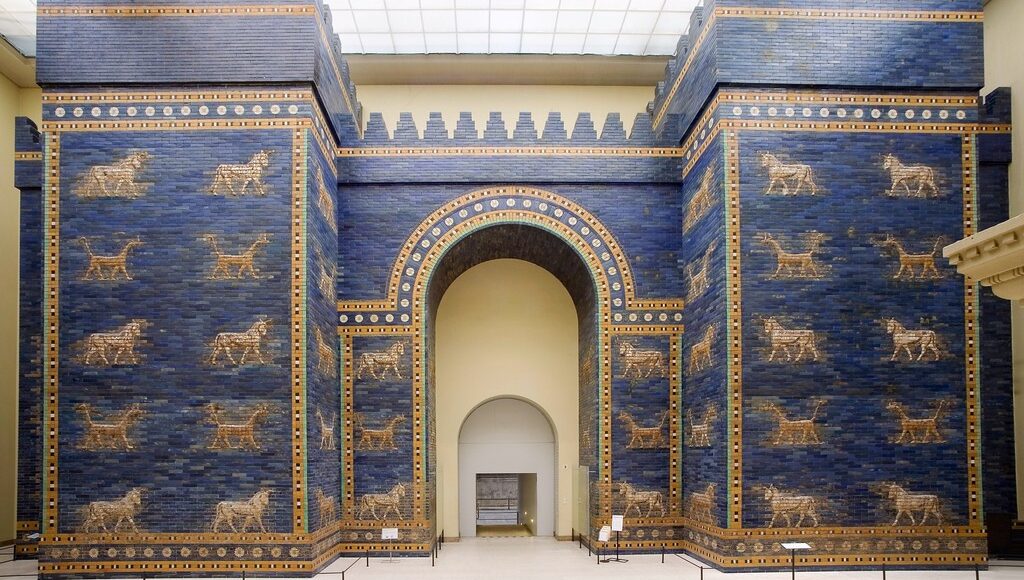Welcome!
Welcome, and thank you for signing up for our “Back In Time” program! Today we will be taking you to the Ishtar Gate in Babylon, around 565 BCE. At that time, King Nebuchadnezzar II was the ruler, and he was doing a great job. His kingdom was spread from present-day Egypt to Iran and Turkey! I know you’re excited so let’s get started.
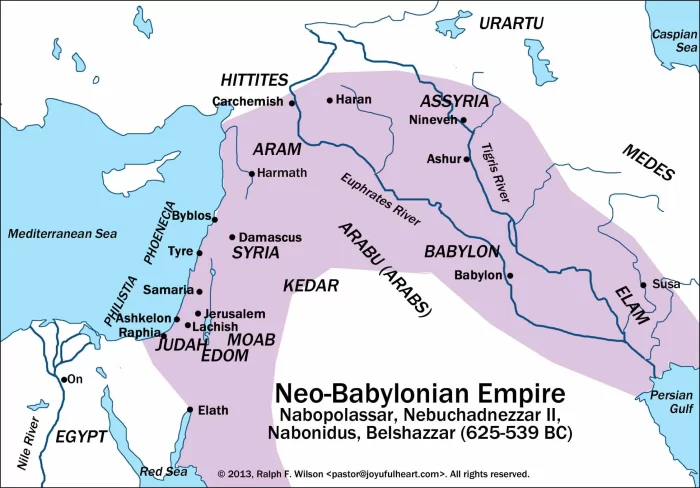
The height of the Babylonian Empire
The Processional Way and the Goddess Ishtar
As you can see there are many people around you, and that’s because you are a guest of King Nebuchadnezzar at Babylon’s annual New Year’s Festival. This was a celebration marking the start of a new agricultural year and was a dedication to the Babylonian chief god Marduk. As you look ahead you can see the 800-meter-long Processional Way that leads up to the Ishtar Gate. Nebuchadnezzar wants to make sure he is credited with all buildings here in Babylon and, as such, beneath this pathway sits an inscription from Nebuchadnezzar reading, “in the street of Babylon used for the procession of the great lord Marduk I made the road smooth with limestone slabs.”
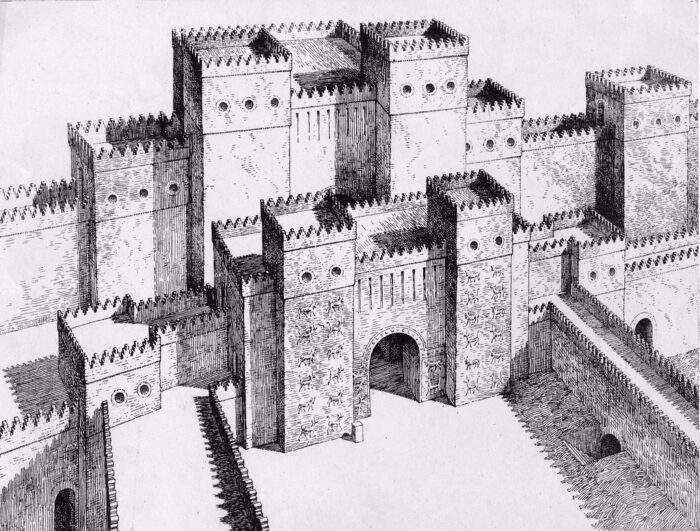
Looking around you’ll see that the Processional Way is made with paved red and yellow stone and is lined with decorated walls on either side. These walls are imprinted with white flowers (with a yellow center) and 120 striding lions with white fur and yellow manes. These lions represent the Goddess Ishtar, the goddess of fertility, love, and war. Their mouths are barred open and their teeth showing. A menacing, if not protective artistic approach to all pedestrians who look at the lions that are placed at eye level.
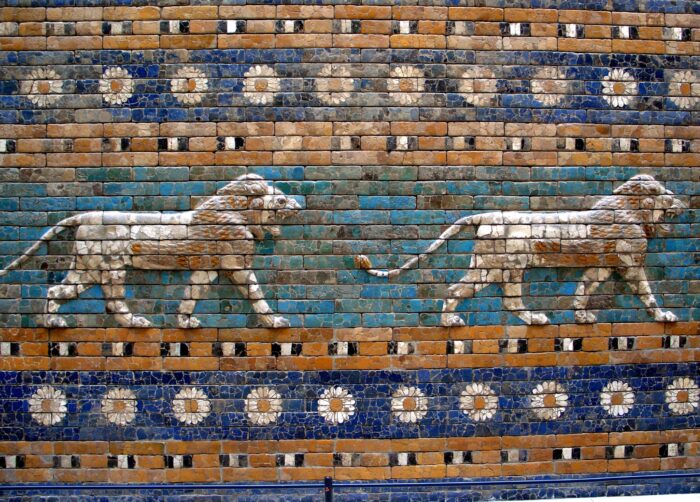
What is the Gate Used For?
Looking behind you, you will notice the statue of Marduk, with other gods as well, being carried along the Processional Way. This is because the Ishtar Gate is “a means of entrance…[as] it was the point at which the statue of Marduk, which had dwelt in the New Year’s temple outside the walls,…[reenters] the city.” And, if you look ahead you will notice that the Processional Way leads directly to the temple of Marduk, where the New Year’s Festival leads to.
As you walk closer to the gate you will start to notice the grandeur of the Ishtar Gate and that it is, in fact, two separate gates (one smaller and one larger). The larger of the two is around 82 feet tall. You may notice that it is in pristine condition, and that is because King Nebuchadnezzar recently rebuilt the gate for the benefit of the city. An inscription on the gate details that Nebuchadnezzar “pulled down these gates and laid their foundations at the water-table with asphalt and bricks… [he] covered their roofs by laying majestic cedars length-wise over them, [and] hung doors of cedar adorned with bronze at all the gate openings.” Though he only admits it once, it is certain that he must have “rebuilt it several times.”
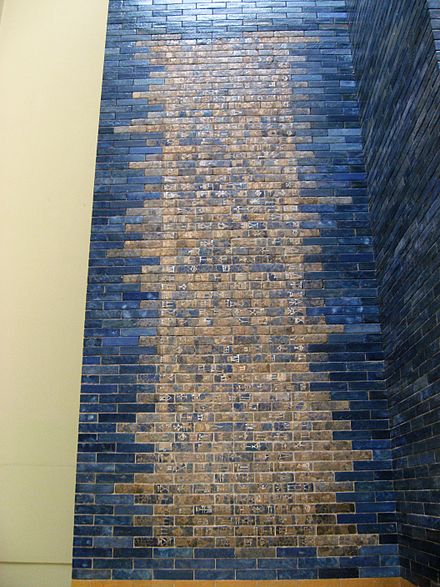
You Have Arrived at the Ishtar Gate!
Now that we’re at the gate you can look more closely and see that it is made with glazed blue brick, the blue came from copper which was also very durable against all weather. It is decorated with a combination of 150 dragon-like beasts called the mushussu; an animal with the front paws of a lion, a head and neck of a snake, the hind legs of an eagle, and the tail of a scorpion; and a now extinct bull named the Auroch bull, the bull has a yellow body, green horns and dark blue curls in a line of hair across the body. The dragon displayed is a symbol of the chief God Marduk, and the bull is a symbol of the storm God Adad. Just like the lions seen at the Processional Way, the visible mushussu seem to be a guard against evil as King Neriglissar (the king of Babylon from 560-556 BCE) left an inscription detailing that he “cast seven bronze… mushussu, who splatter enemy and foe with deadly venom.”

It looks like the festival is about to wrap up as Marduk’s statue is being led to his temple right next to the ziggurat in the city, but before you leave take another look at the inscription left by Nebuchadnezzar. The inscription details that Nebuchadnezzar made the gateway a “luxurious splendor so that people, [like you,] might gaze on [it] in wonder,” a lovely sentiment left by one of Babylon’s most successful rulers.
Thank you for being a part of our program! If you wish to undergo a similar experience, the historical site in Iraq has been able to digitally capture what remains of the Ishtar Gate in Iraq. Click the Fourth Video Here.
Byline
My name is Bernard McGuire. I am in an Ancient Persia and Ancient Greece History class. Over the past weeks I have been learning specifically about Ancient Persia and its relationship with Babylon, and I thought the Ishtar Gate would be a good fit for what I’ve been looking at over the first month in class.
